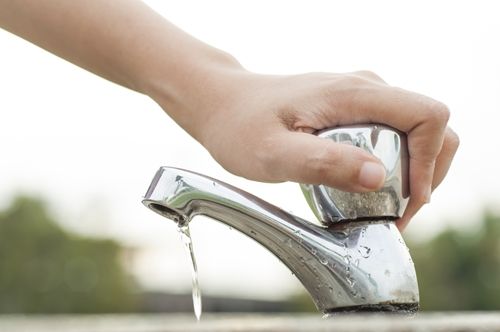Conserve water around the house with these simple tips
March 23, 2017
Drip… drip…. drip…
Hear that sound? A leaking faucet isn't just an annoyance. It's one of the many ways that you waste water every day around the house. According to McGill University, Canadians use an average of 329 litres of water every day at home, only 10 percent of which goes to drinking and cooking. Because drinkable water is a limited resource that's necessary for human life, finding ways to cut down on wasting this essential liquid is something in which every person should be involved.
Making your house more eco-friendly doesn't need to be a huge project. In fact, there are multiple changes you can make that take little effort on your part – just a bit of foresight. Use this simple guide to get started improving your water conservation around the house today.
Assess your home
When it comes to saving water, the first step is to check your home for those pesky leaks. According to National Geographic, nearly 40 liters of water – or about 14 percent of a person's indoor water use – is wasted each day due to leaks alone. And your faucets aren't the only place where that liquid might be escaping. Make sure to stick your head underneath your sinks to check the pipes and look at the seals around your water heater.
Some of the leaks may not be as obvious. For example, water from your toilet tank may be escaping into bowl without any auditory or visual cues. The Regional Water Providers Consortium recommended putting a few drops of food dye in the tank -without flushing – and checking back in 15 minutes. If the water in the toilet bowl changed color, you know that you have a leak.
 Are you running your dishwasher before it's completely full?
Are you running your dishwasher before it's completely full? Implement new best practices
After you fix any leaks, it's time to assess the way you use water around the house. For instance, you can increase conservation simply by using your dishwasher more efficiently. Rather than running it every night before bed or an otherwise convenience-based schedule, be sure to wait until it's full to reduce the number of loads you do each week. The same goes for the laundry machine. Unless you have a setting for different sized loads, try to avoid running a cycle just for a couple shirts that you could easily wash by hand. If you do have different settings, make sure that you're using the correct one to conserve water.
Being strategic with your showers is another way to conserve water in your home. McGill reported that 35 percent of domestic water use in Canada goes toward bathing. While you don't need to skip showers altogether – and probably shouldn't either, for that matter – limiting the time you spend standing under the water is an easy way to be more strategic with your water consumption. Save those nice, long showers for special occasions.
Replace your fixtures and appliances
While changing your habits around the house can have a significant impact on your water use, you can reduce even farther by installing water-efficient appliances and fixtures. According to the U.S. Environmental Protection Agency, this alone could reduce water consumption by about 30 percent.
Your shower is one part of your home that can really benefit from this strategy. National Geographic reported that during the course of a 10-minute shower, a low-flow the showerhead will save you about 57 litres of water. If you shower every day, that's a savings of more than 20,000 litres each year. Changing the showerhead is a small fix that can have a big impact.
Your toilet is another component of your bathroom that can be more efficient in terms of water use. A low flush, high efficiency or duel model toilet can save liters of water with every flush, according to the Sustainable Sanitation and Water Management Toolbox.
To find the right water-efficient fixtures for your home, visit a Wolseley showroom and explore our wide selection. An associate will be happy to help you find the perfect solution to increase water conservation in your house while also elevating the style of your rooms.

